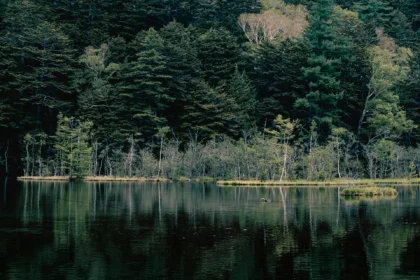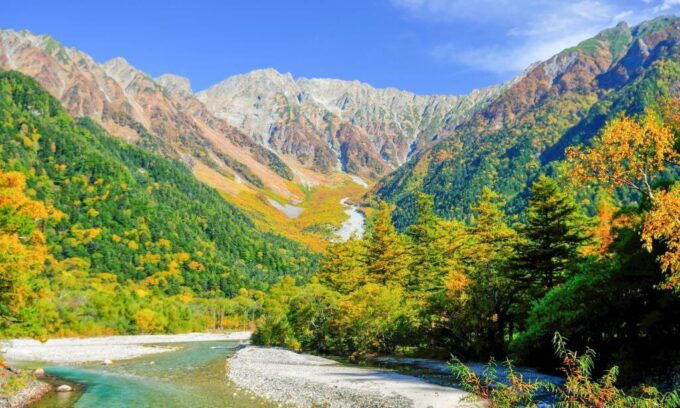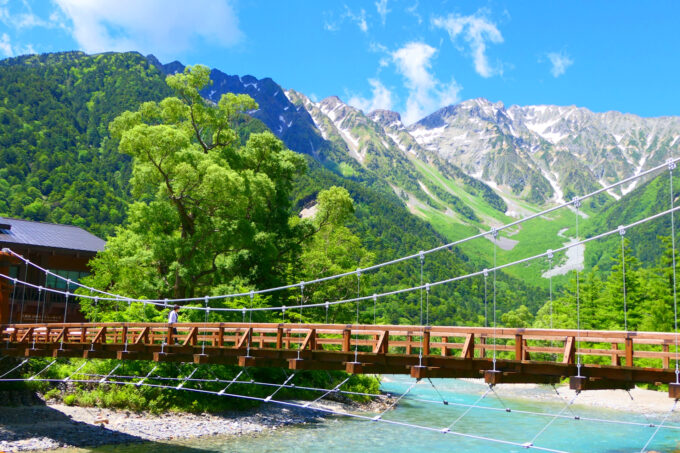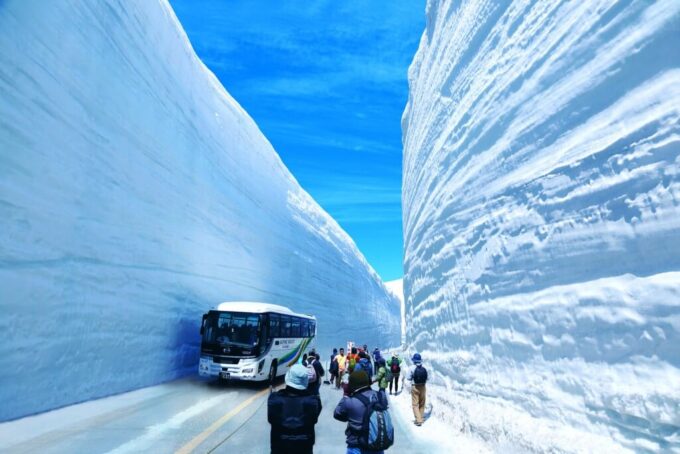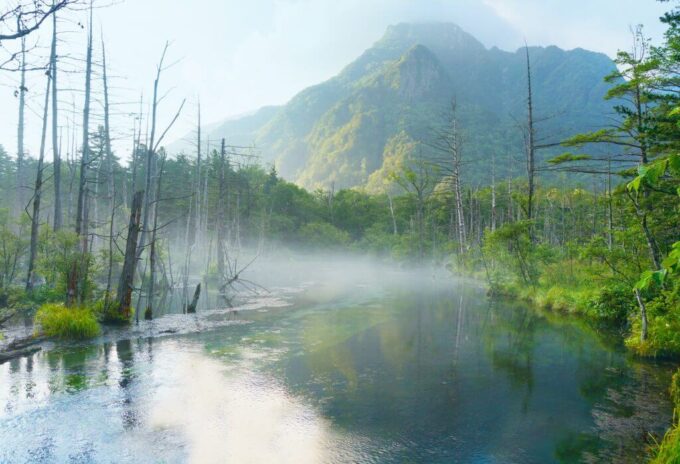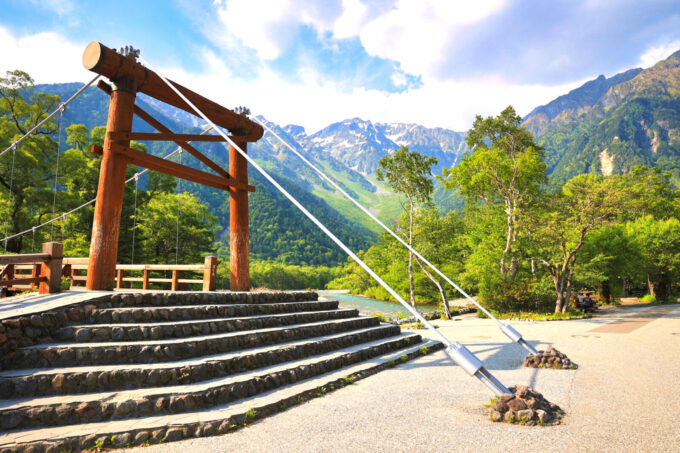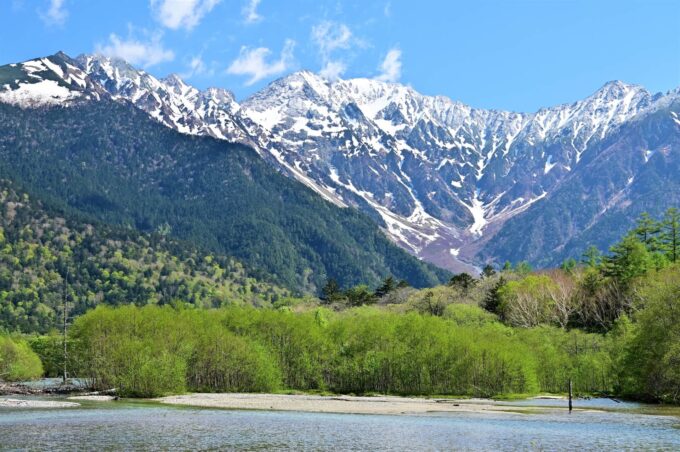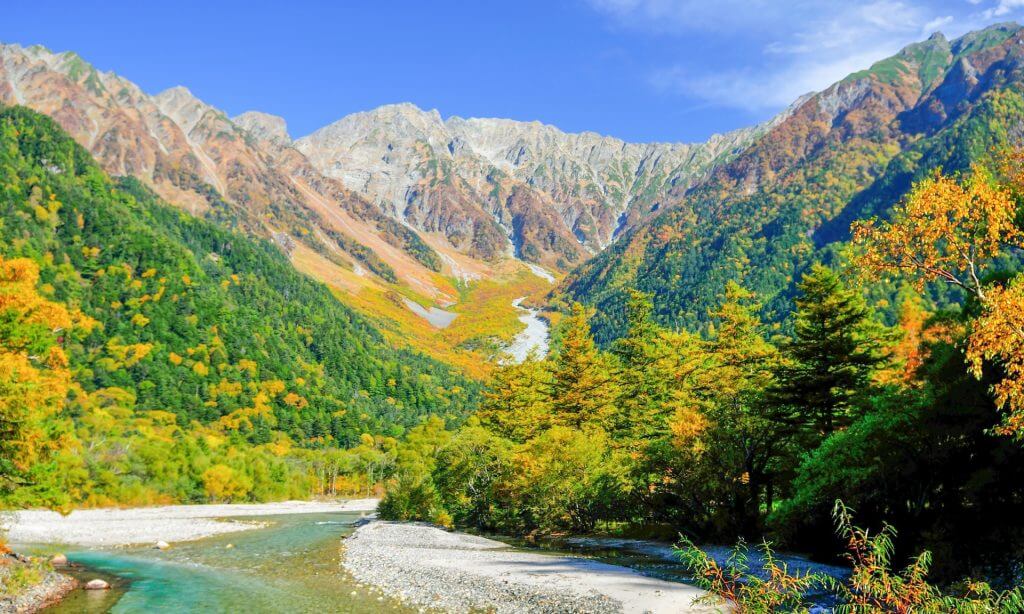
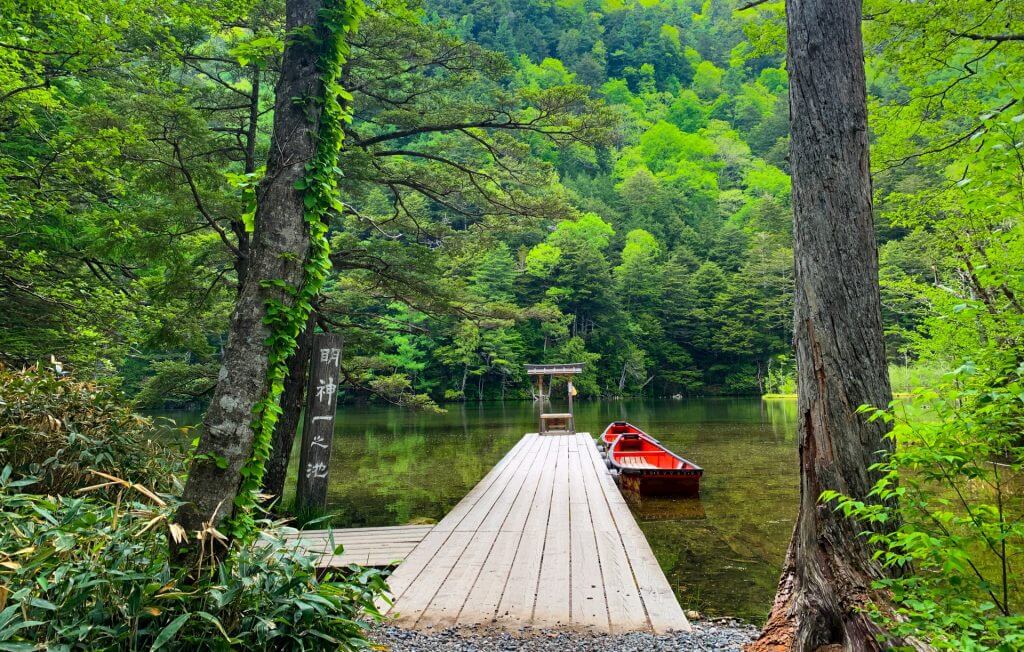
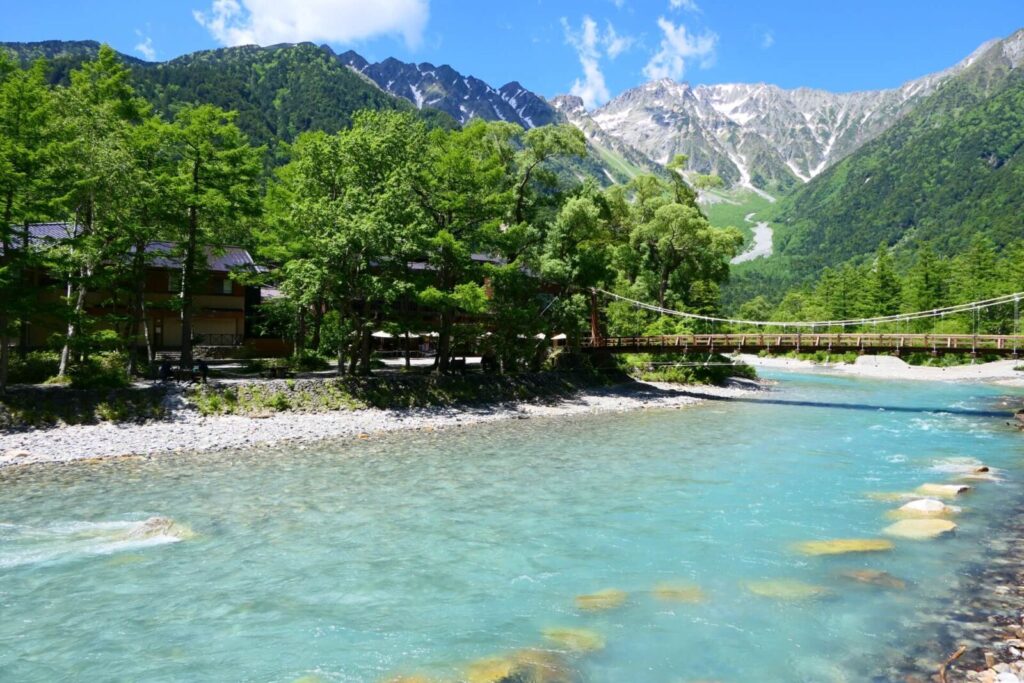
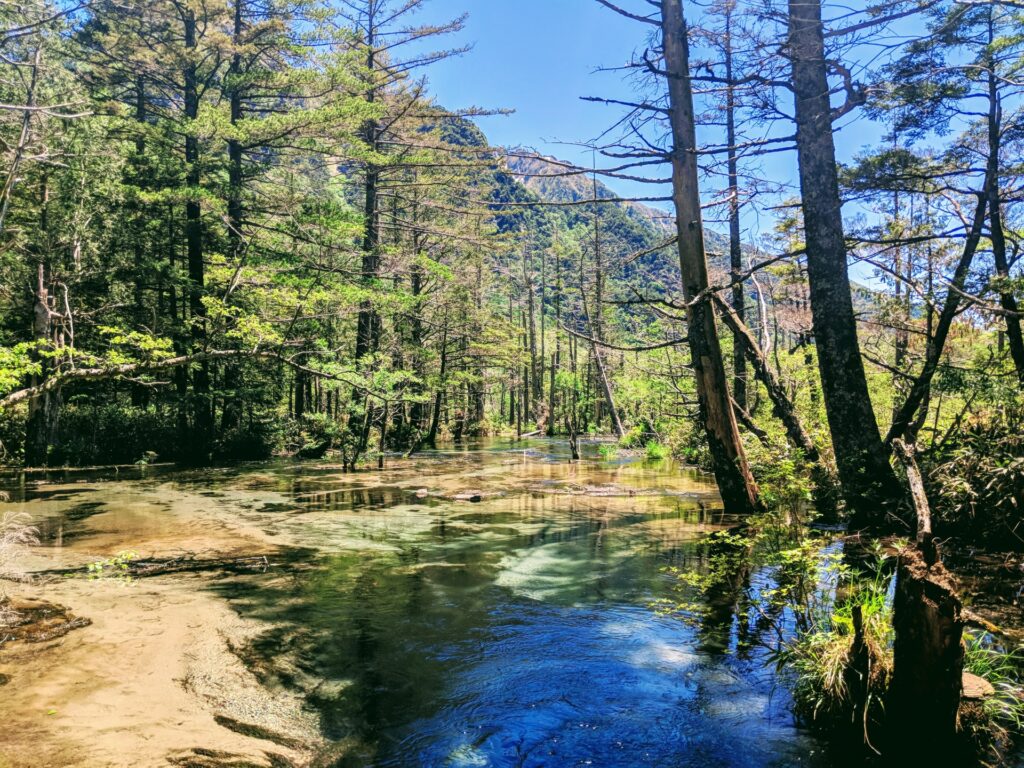
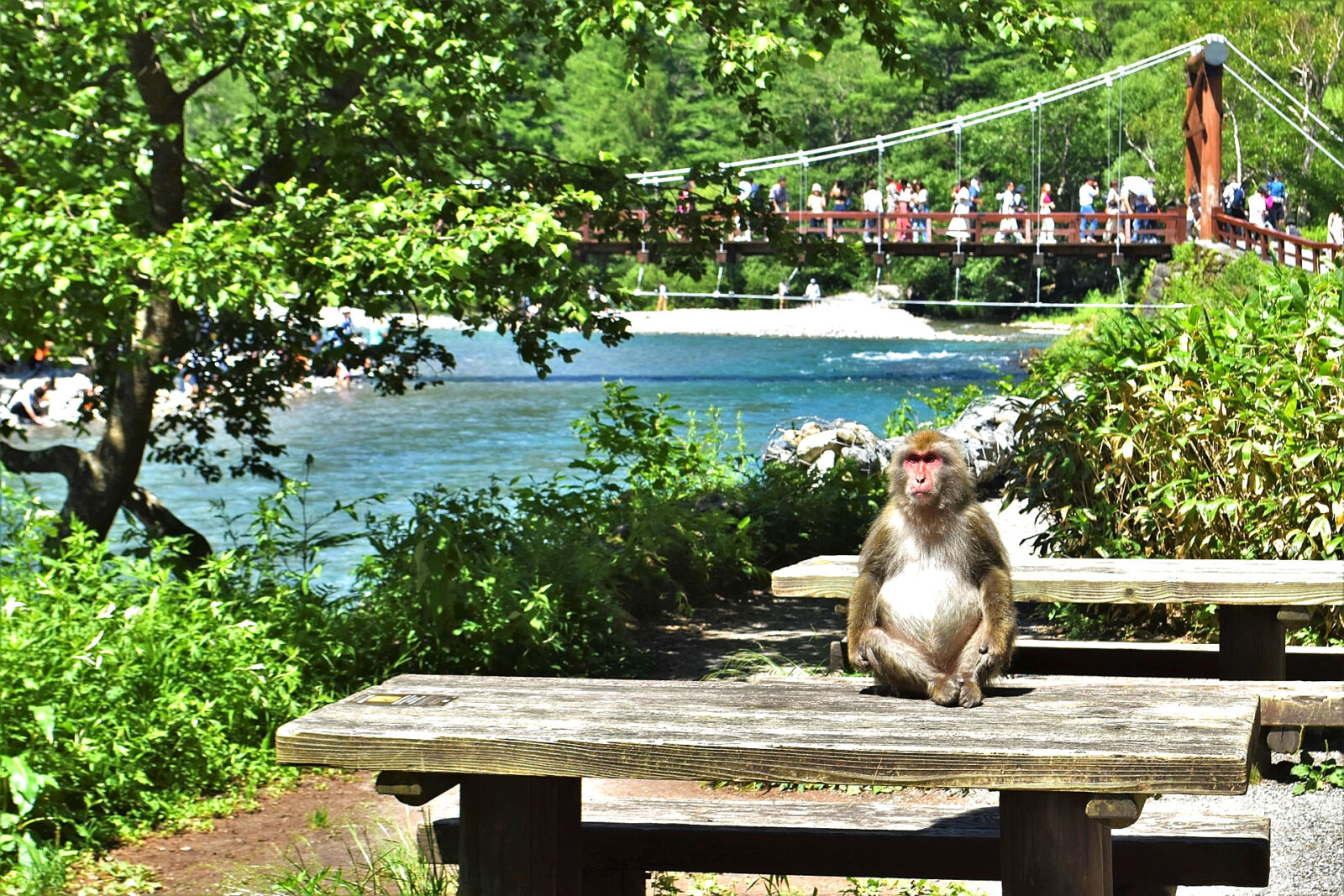
Inaccessible through winter, Kamikochi is open to the public from mid-April until mid-November. Private vehicles are not permitted to enter at any time, meaning that visitors are required to access Kamikochi using properly registered vehicles including coaches, private taxis or tour vehicles. Hugely popular with Japanese tourists and increasingly well-known with international visitors, such restrictions have helped ensure the preservation of this important alpine ecosystem. Hiking trails span-out through the valley - ranging from leisurely strolls to expert mountain climbing – with the most popular routes taking 1 to 3 hours following the Azusa River to scenic points including Taisho Pond, Kappabashi, Dakesawa Marsh, and Myojin Pond.
-- What Makes Kamikochi Special?
-- Walking in Kamikochi: The Best Trails
-- Attractions Around Kamikochi
-- 15 Things to Do in Kamikochi
-- Tours and Charters to Kamikochi
Read on below for all the information you need to know about Kamikochi, including tour packages.
WHERE IS KAMIKOCHI?
Located around 250 KM from Tokyo and around 50km from both Matsumoto and Takayama, Kamikochi is a beautiful alpine valley in the Northern Japanese Alps. With such an easily accessible location, and world-class mountain views, it has long been popular as a getaway from Tokyo to escape the heat and crowds, and now has gained international fame. Kamikochi itself is closed to private vehicles, and may only be accessed by public buses, taxis, or private tour vehicles. Access options from Tokyo include either direct highway bus or using the Azusa Express train line to reach Matsumoto, before riding the local Kamikochi train line to Shin-shimashima station where express buses will be waiting for travelers. Alternatively, it may also be reached by direct bus from Takayama in around 1.5 hours. If you come by private vehicle, you may park at one of the parking lots (Sawando on the Matsumoto side and Akandana on the Takayama side), and switch to the bus there, which will take a further 30 minutes to reach Kamikochi. Taking part in a guided tour is also a great way to reach the park directly without worrying about switchovers and timetables.
WHAT MAKES KAMIKOCHI SPECIAL?
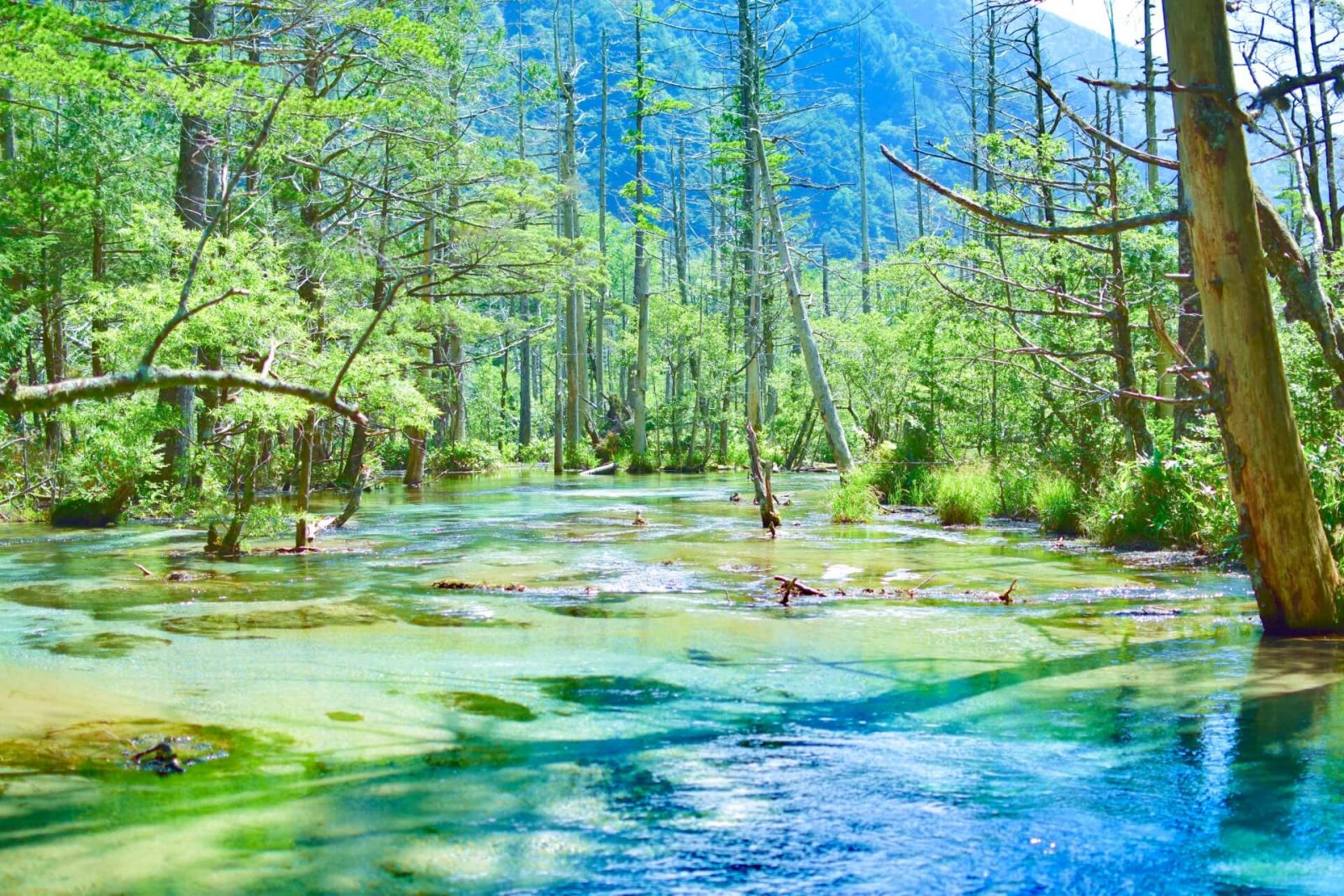
The practice of worshipping in nature has always played an important role in Japanese culture. Stemming from Japan’s native religion of Shintoism, natural features including mountains, rivers, waterfalls, and particularly impressive trees and stones have long been seen as sacred and imbued with a divine nature. Indeed, prior to the introduction of Buddhism and the Buddhist tradition of building temples, followers of the ancient form of Shintoism known as ‘Ko-shinto’, did not construct shrine buildings but worshipped at or revered natural features.
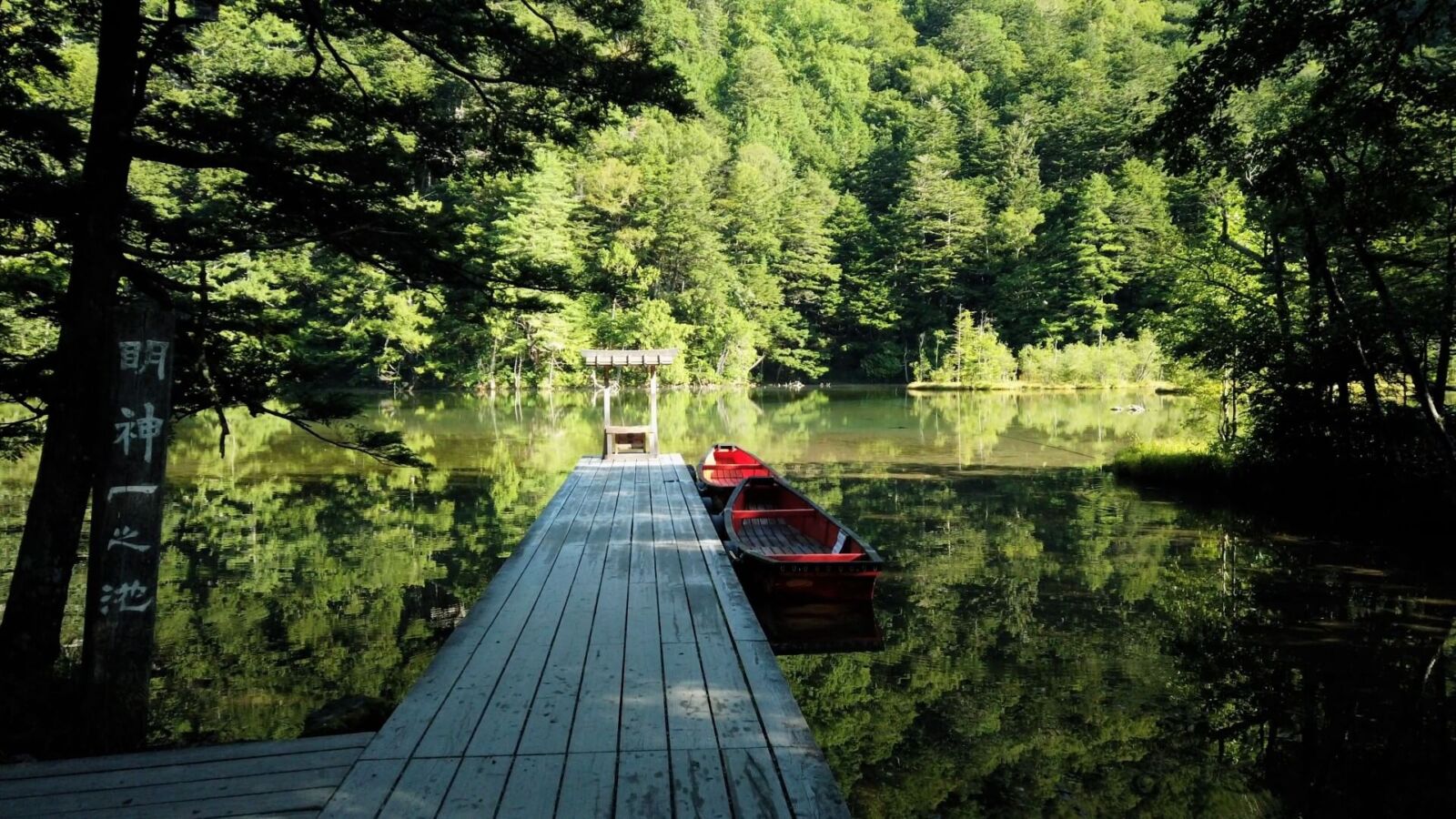
Shintoism continues the tradition of nature worship today with many if not most Shinto shrines standing in close proximity to notable natural features. Rising over 3000 meters, Mt Hotaka is said to be where a god, Hotakami-no-Mikoto, descended to Earth. The name Kamikochi can actually be translated as, “place where the god(s) descended”. Shrines now honor that god or spirit, in the shadow of the imposing mountains.
During the long period of peace known as the Edo era (1600-1868), mountaineering gained increased popularity amongst Japanese commoners as a way of expressing religious sentiments and gaining a respite from the doldrums of daily life. The notion of mountains as a place of pure recreation was introduced by Europeans from the mid-19th Century onward. Remarking that the Hida Mountains reminded him of their European counterparts, British surveyor William Gowland coined the term “North Japan Alps” before it was popularized by Rev. Walter Weston with the publication of his now famous book, ‘Mountaineering and Exploration in the Japanese Alps’ in 1896. Overtime, the term came to be applied to all mountains in the Hida, Kiso and Akaishi Mountain ranges as the “Japan Alps”.
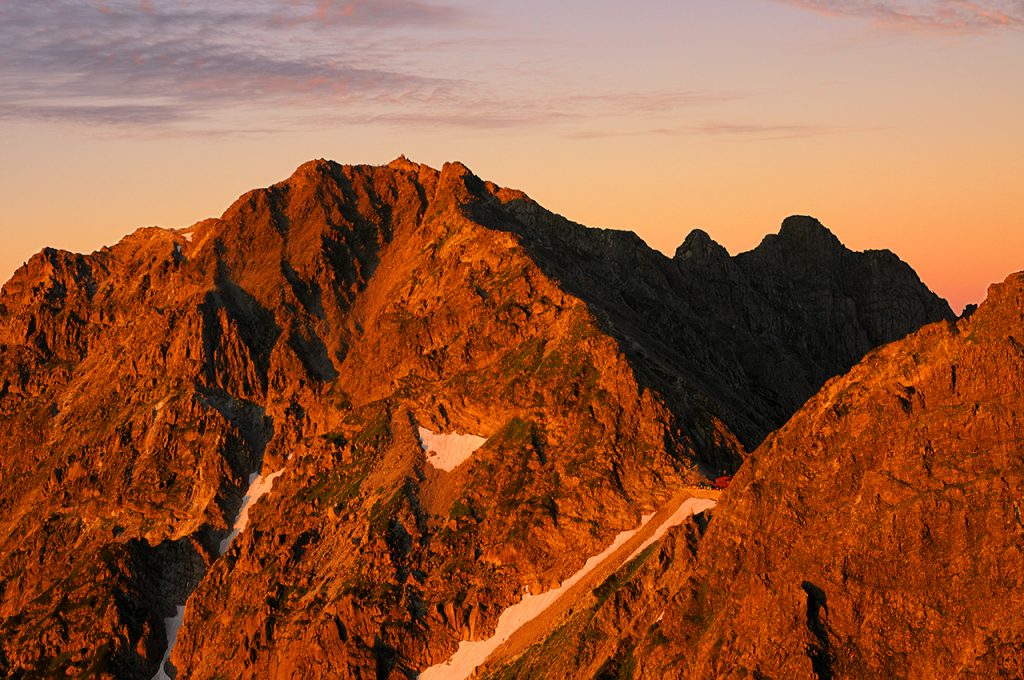
Within those mountains, the Chubu Sangaku National Park was established in 1934 as one of the eight original national parks in Japan. Incorporating many notable natural sites such as Mt Tateyama and Mt Norikura, Kamikochi was also included in the park, deemed a ‘Place of Scenic Beauty’ and a ‘Special Natural Monument’, and thus afforded protected status. Today, restrictions on the entry and flow of visitors are in place to preserve the pristine nature of the valley and the important plants and animals found there.
PREPARING FOR YOUR VISIT
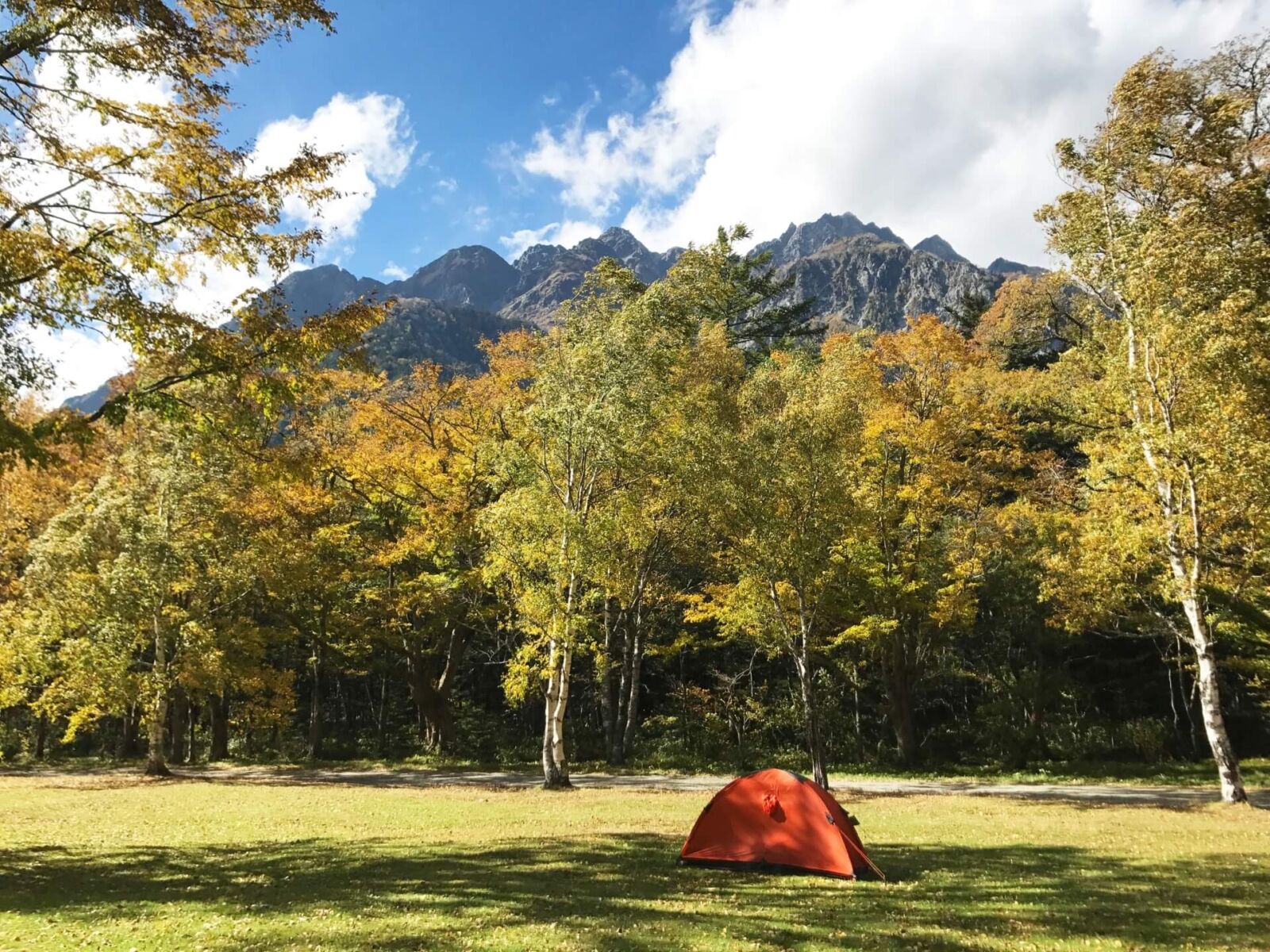
Though development in the valley has seen the introduction of accommodation and eateries, private vehicles were banned from entering in Kamikochi in 1975 and other controls were put in place in an attempt to preserve its pristine nature. As a result, Kamikochi retains its natural splendour despite being one of Nagano’s most popular destinations. Around Kappabashi there many eateries, hotels and other public facilities but nevertheless this is an alpine landscape where conditions can change quickly. In order to get the most out of your visit, it’s worth considering the following:
What to Wear: Good quality walking shoes or boots are essential if you are going to undertake a walk in Kamikochi. While the trails are well-maintained, we always recommend that your footwear is suitable for walking in alpine conditions. Otherwise, breathable and easily movable clothing that protects you from sun or underbrush will be a huge advantage. If you only intend to stay around the developed area near Kappabashi Bridge, hiking gear will not be necessary, but it is always a good idea to bring easily removable layers and rain gear. For specific seasonal information, see HERE.
What You Should Bring: We recommend carrying a small backpack with all the essential items for extended outdoor walking. Water, light snacks, sunscreen, and a map (available at the tourist information centers) are invaluable. Although not a major concern at altitude, some visitors choose to carry insect repellent while others choose to use walking sticks. Most importantly, bring your camera! Bears are present in Kamikochi and you will hear some hikers coming long before you see them because of the ring of their bear bells. If you are concerned about the presence of bears, bells are available in the shops around the Kamikochi Bus Terminal and Kappabashi - but it is worth noting that the bears are timid and typically want nothing to do with humans.
WALKING IN KAMIKOCHI: THE BEST TRAILS
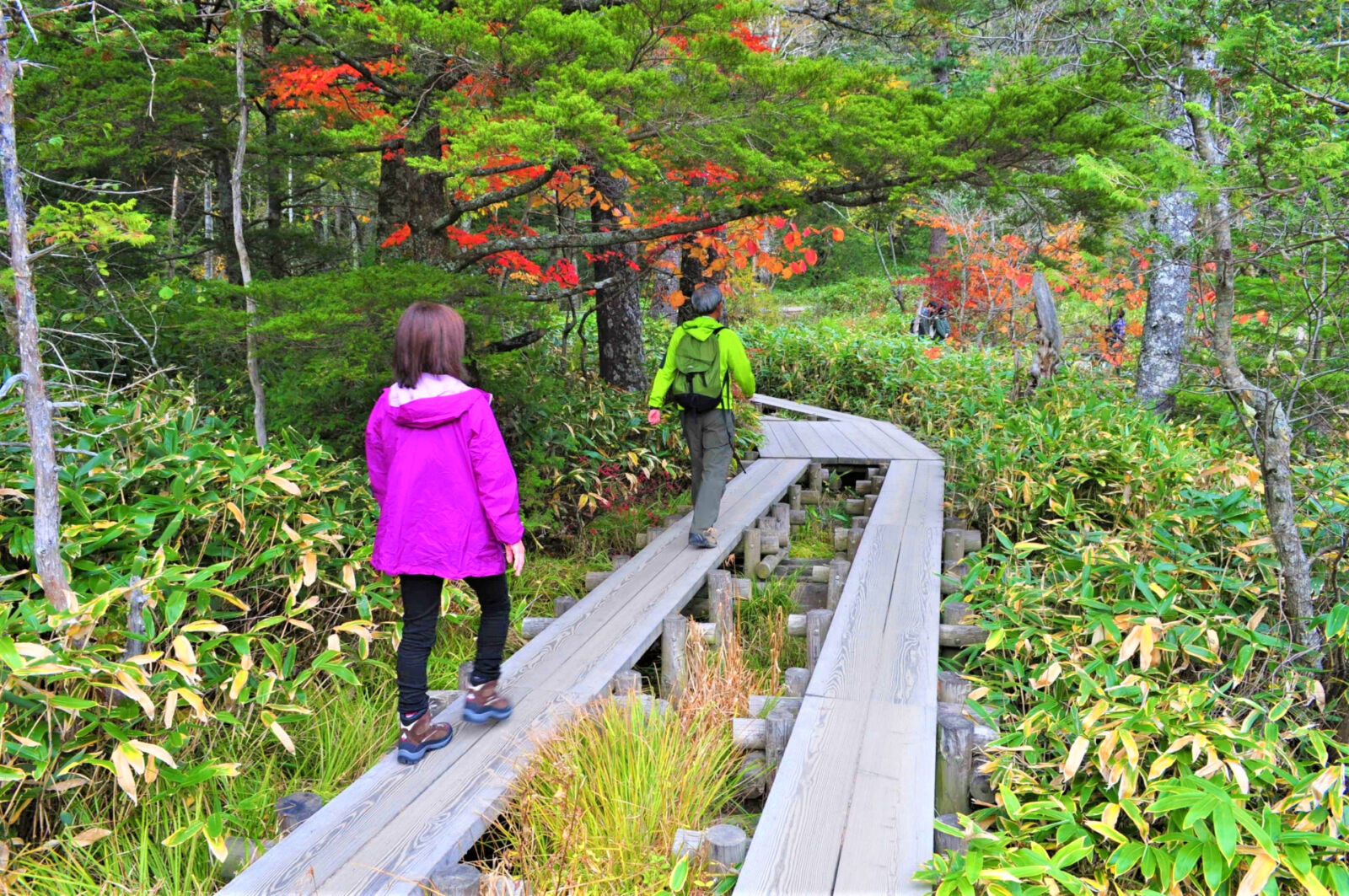
Trails span-out across the valley and into the mountains, leading to each of the highest peaks – Mt Yari (3180m), Mt Hotaka (3190m) and Mt Yakedake (2455m). These trails are at a minimum an overnight undertaking with longer multi-day hikes drawing mountaineers from all over the world. Trails into the mountains can be treacherous and should not be undertaken without appropriate preparation, expertise and notifying park staff when and where you will be going.
For day visitors to Kamikochi the trails leading to and from Kappabashi present easy and highly enjoyable walking. Trails leading from Kappabashi to Myojin Pond and Taisho Pond are well-maintained with sections of raised wooden walkways to preserve the sensitive ecosystem. Please ensure that you stay on the trail and walkways at all times, and be mindful not to walk through or damage the surrounding environment.
See below for specific itineraries:
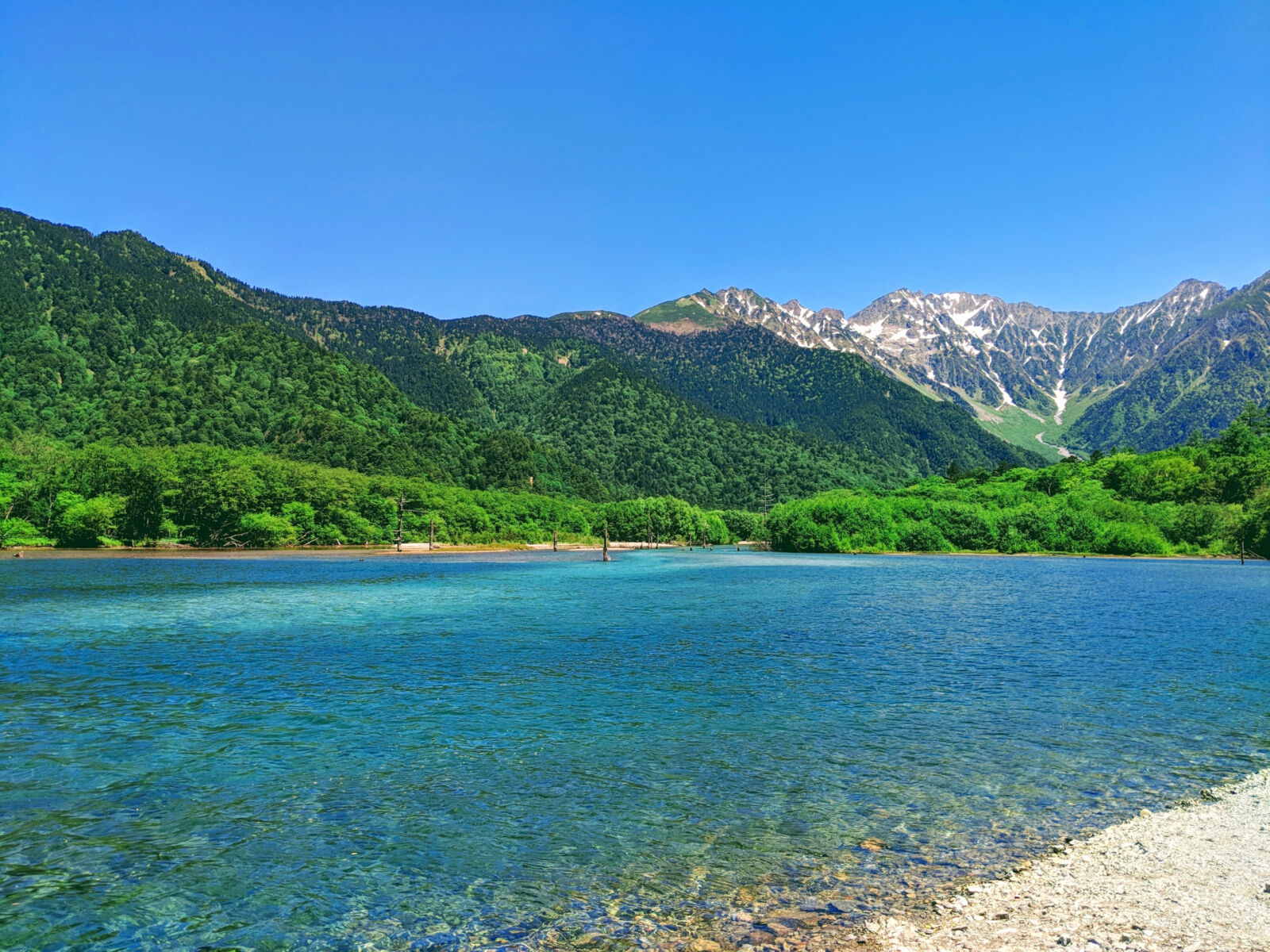
Taisho-Ike to Kappabashi: 1 to 1.5 Hours
This easy walk can be undertaken by anyone of reasonable fitness. The walk is completely level and offers some fantastic views of Taisho Pond (pictured below), Mt Yakedake and Mt Hotaka, as well as the Azusa River and includes a pleasant mix of walking through forests and open areas on a well-maintained trail or raised walkway known as the ‘Nature Research Trail’. By starting from Taisho Pond, you are immediately introduced to one of Kamikochi’s most famous vistas – the triple-peaked Mt Hotaka rising above the valley, which on a still, clear day, will be reflected magnificently on the water's surface. The trail then leads you into a lightly forested area and crisscrosses pristine waterways. The clarity of the water is amazing and the verdant aquatic plants below the surface are a captivating sight.
As the trail continues you will intermittently come to open areas, offering outstanding views of the surrounding mountains. Around the mid-point of the walk you will pass the Hotaka/Tashiro Bridges, which take you onto the opposite river bank where several hotels and lodges are located. The walk concludes at Kappabashi, an immensely popular scenic point catered to by many restaurants and cafes. This is an ideal walk when you don’t have much time but want to experience the beauty of Kamikochi.
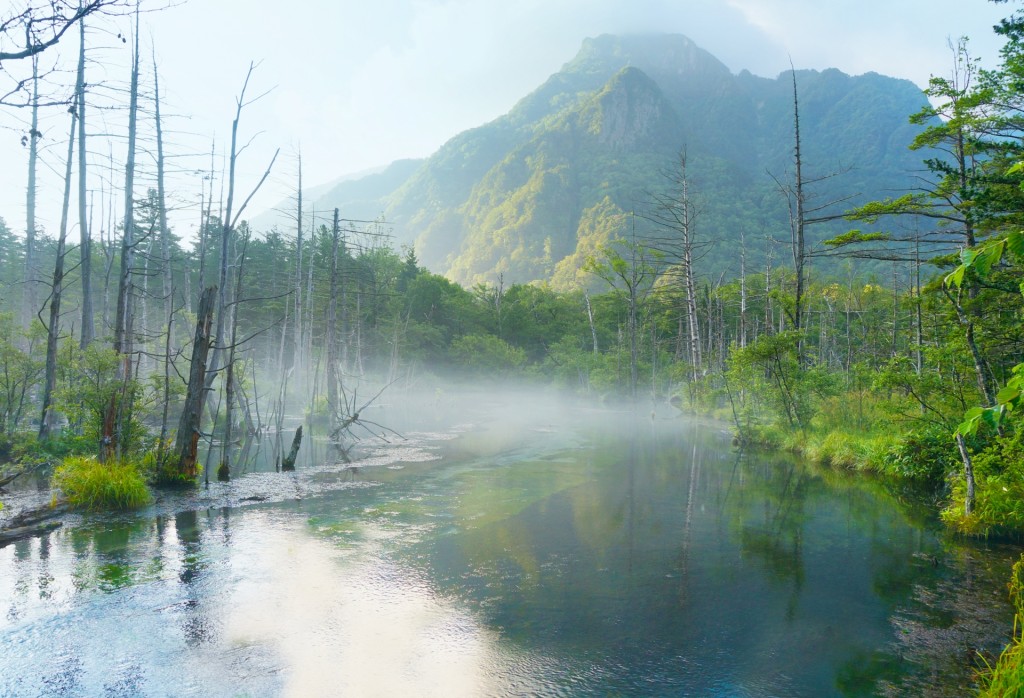
Kappabashi to Myojin-Ike: 2.5 - 3.5 Hours Round Trip
From Kappabashi we recommend walking along the trail on the western bank of the Azusa River – on your left but actually referred as the Azusa River Right Bank Trail as the river is flowing in the opposite direction to which you will walk. You will immediately be captivated by the expansive view of Mt Hotaka and the river shimmering below.
As you move along the trail you’ll pass through cool forests and over pristine waterways including Dakesawa Marsh (pictured below) before heading back into the forest and eventually arriving at Myojin Pond/Hotaka Shrine. The trail is well-maintained and features some raised walkways. While mostly level there are occasional uphill or uneven sections but these are easy to deal with for anyone of reasonable fitness.
This section of the walk takes approximately 1.5 hours. Allowing time to enjoy the pond and shrine, you can either head back along the same trail or cross Myojin Bridge and walk the shorter, more direct eastern trail back to Kappabashi. You will spend most of this trek on a wide walking path and within the forest – visitors often encounter monkeys in this area – with beautiful views of Hotaka. To complete the full circuit and return to Kappabashi takes between 2.5 and 3.5 hours depending on your pace and how long you want to spend at Myojin Pond.
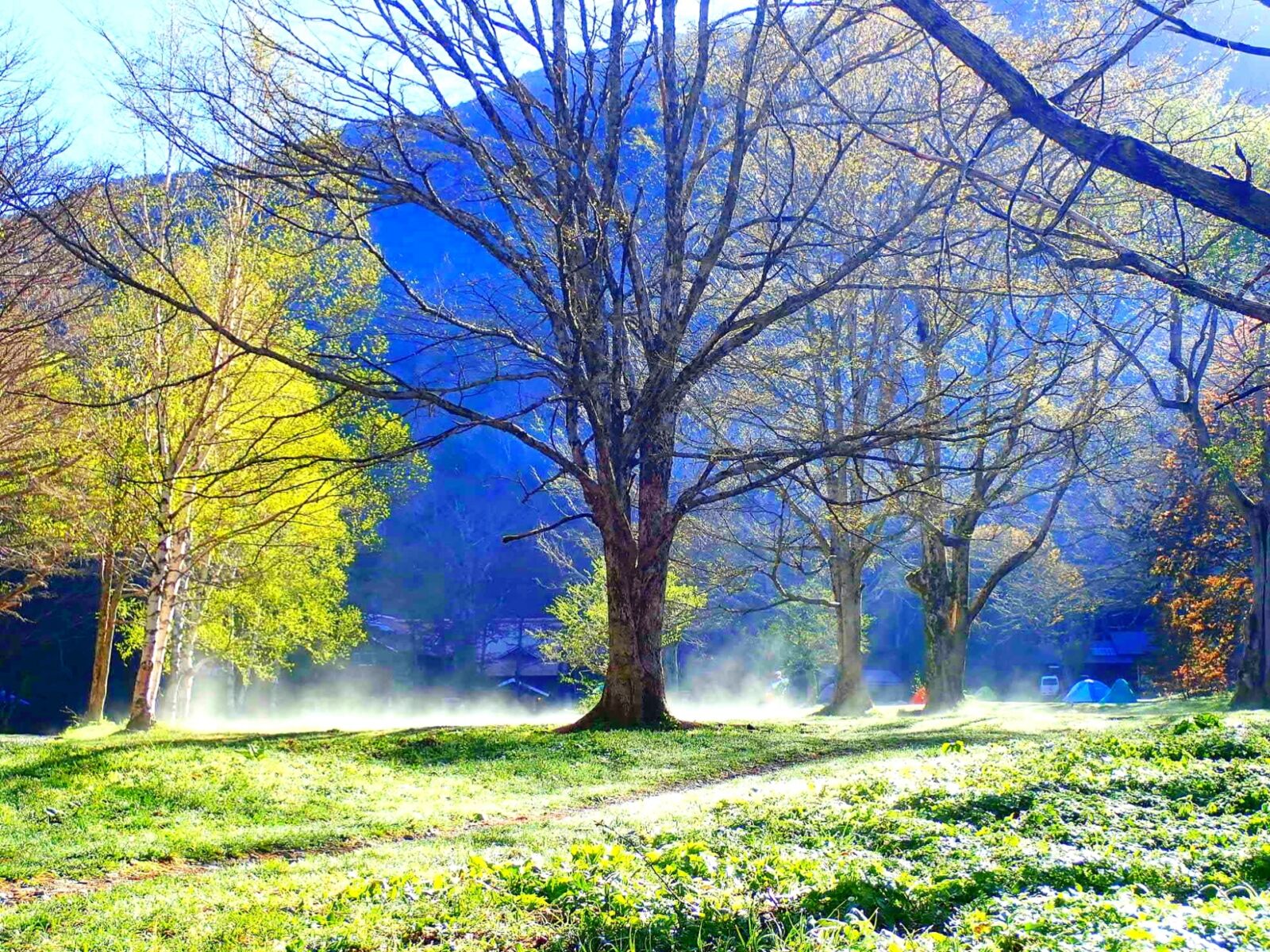
Kappabashi to Tokusawa: 5 - 6 Hours Round Trip
Hiking to the Tokusawa Area takes you well away from the crowds and to an area most visitors don’t have the time or motivation to reach. If you have both one (or hopefully both!) of those going for you, covering the extra distance is well worth it! To access the Tokusawa Area, simply follow the trail from Kappabashi to Myojin Bridge – either side of the river is fine – and once there, come onto the Azusa River Left Bank Trail (remember the river runs in the opposite direction so this is the trail on the right hand side when walking away from Kappabashi) and undertake the final 50 to 60-minute walk to the Tokusawa Area. It’s clear where to go as there is no trail on the other side of the river.
This section of the trail is more undulating and requires good fitness and mobility to complete. Once at the Tokusawa Area you will find a camp ground and lodge – an overnight stay is a great option if you want to walk this far – and just a little further on, the trail head leading into the mountains above can be found near Shinmura Bridge.
THE SEASONS IN KAMIKOCHI
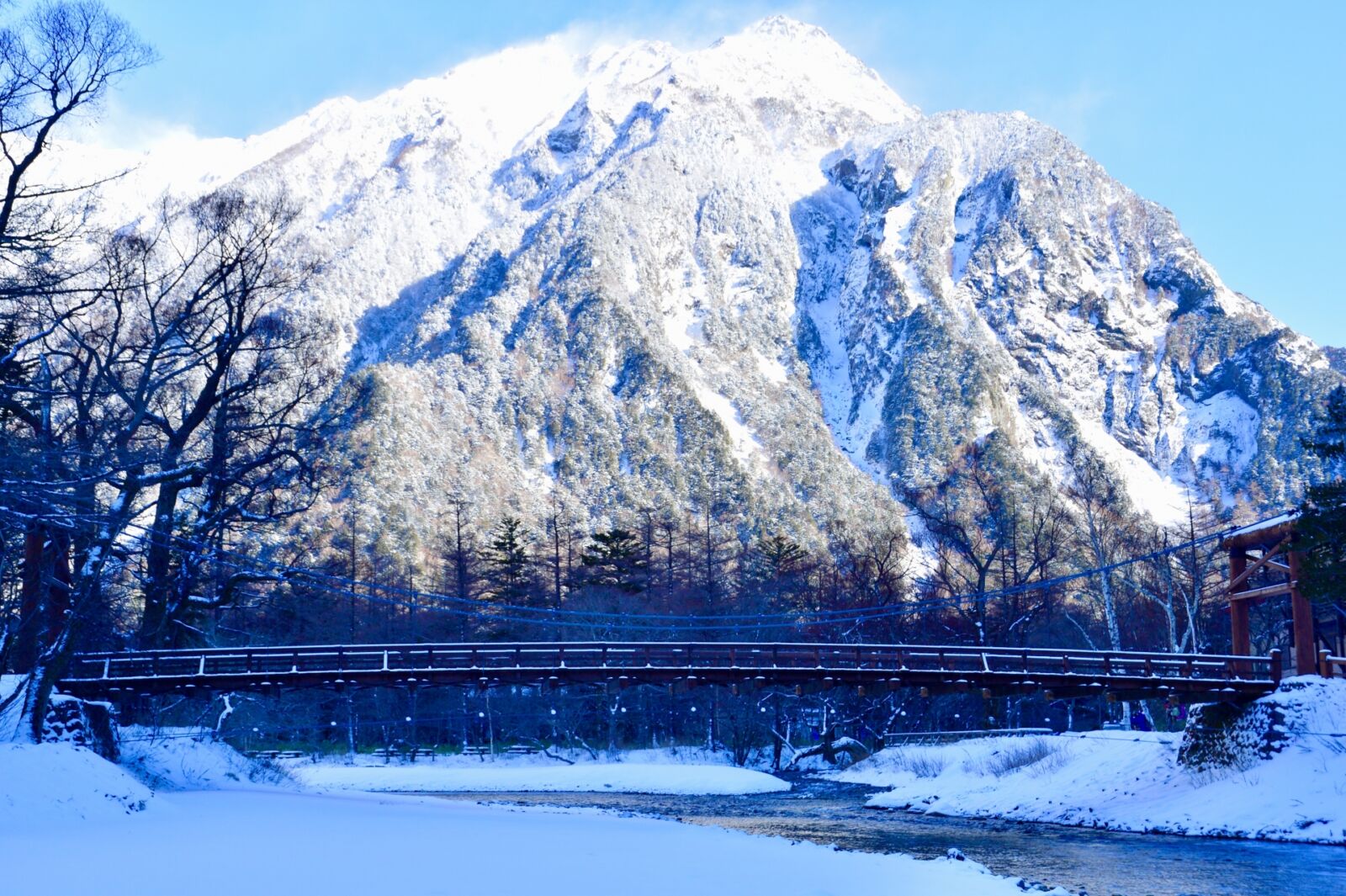
Kamikochi has no bad seasons – it is beautiful every day of the year! However, for most visitors, some times are definitely better than others if you are planning your stay. In general, we would recommend May or October as the best months, but you can find beautiful scenery anytime you make the trip up to Kamikochi.
The most important thing to keep in mind when planning a visit is that Kamikochi is closed to public transport in the winter season, which is generally defined as mid-November to early April. The specific dates are released each year, but in general it will always follow the above pattern. This doesn’t mean that you can’t access Kamikochi, but it does mean that you will need to hike in from the nearest bus stop / parking lot, and will need to be prepared for a serious and potentially dangerous winter trek. We don’t recommend trying this unless you are a seasoned hiker and well-prepared for below freezing conditions and deep snow.
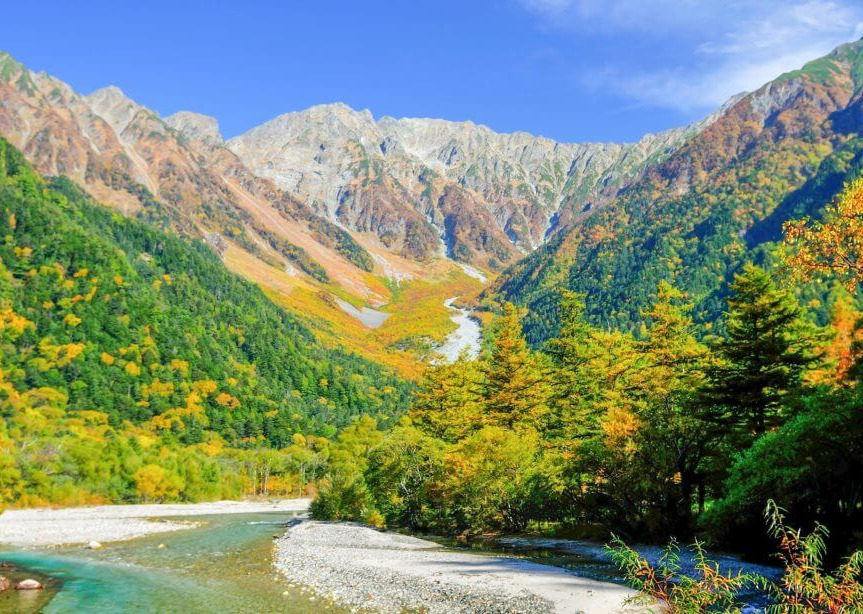
In general, due to its elevation, the seasons in Kamikochi are a little different than Tokyo or even Matsumoto. As a rule of thumb, Kamikochi is typically 10 to 15°C lower than Tokyo on any given day. Expect snow on the ground in some areas even into May (and snow on the mountain peaks up through August in most years), and dress for potentially chilly weather year round. While summer brings warmer weather, and a short sleeve shirt is usually sufficient, rainy days may bring low temperatures. Once autumn comes around, snow will start to fall earlier than in the lowlands and the leaves will change color sooner as well. In general, the peak for fall colors will be from around mid-October to early November, and the more popular viewpoints may get a little crowded.
See below for a month by month breakdown:
April: Many of the trees will still have no leaves and there may still be snowy days/snow on the ground. Later in the month, buds will start to form and the early Spring scenery will be quite beautiful. Daytime temperatures are likely to be between 0-10°C
May: Fresh greenery embraces the valley, and there are many sunny days. We recommend May as one of the best seasons, with the snowy mountain backdrop beautifully framing the landscape. Temperatures will warm up to between 14-17°C in the day.
June: Rainy season begins, and with that the number of rainy days increases. It may be difficult to see the mountains through the mist at times, but on a sunny day the views are breathtaking.
July: Very similar to June, but with more warm and sunny days in the second half of the month. A great time to escape the heat of the lowlands and enjoy the fresh, cool air of Kamikochi.
August: Essentially akin to late July, August brings many warm and sunny days to Kamikochi. With much of the snow melted, you can enjoy a purely summery ambiance. Expect temperatures between 20-25°C.
September: While still green, the nights begin to get chilly and the leaves start slowly changing colors starting from the tops of the mountains. Expect temperatures between 10-17°C.
October: The peak of the fall color season, October brings many sunny days, mild-to-cold temperatures, and amazing shades of red and yellow. It may get a little crowded, so make any reservations well in advance.
November: The last month that Kamikochi is accessible by public transport, most of the tress will have shed their leaves and snow has started falling. The mountains will be peaked with a fresh clean layer of white snow, almost like powdered sugar.
ATTRACTIONS AROUND KAMIKOCHI
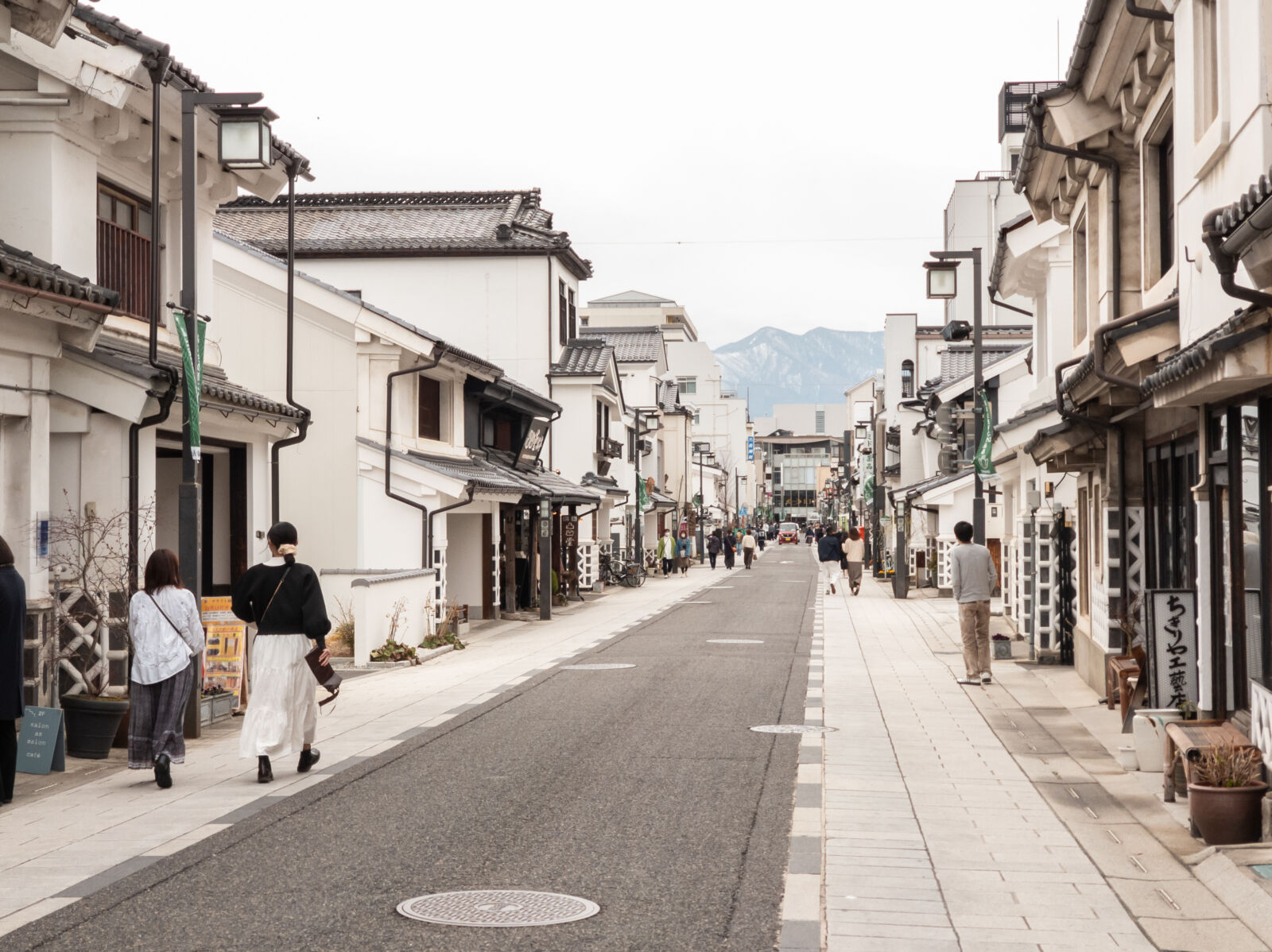
The Central Japan region is blessed with an array of cultural and natural attractions, many of which can be combined with a visit to Kamikochi. Read on for a breakdown of some of the best nearby attractions and how they can be combined with Kamikochi for the perfect getaway.
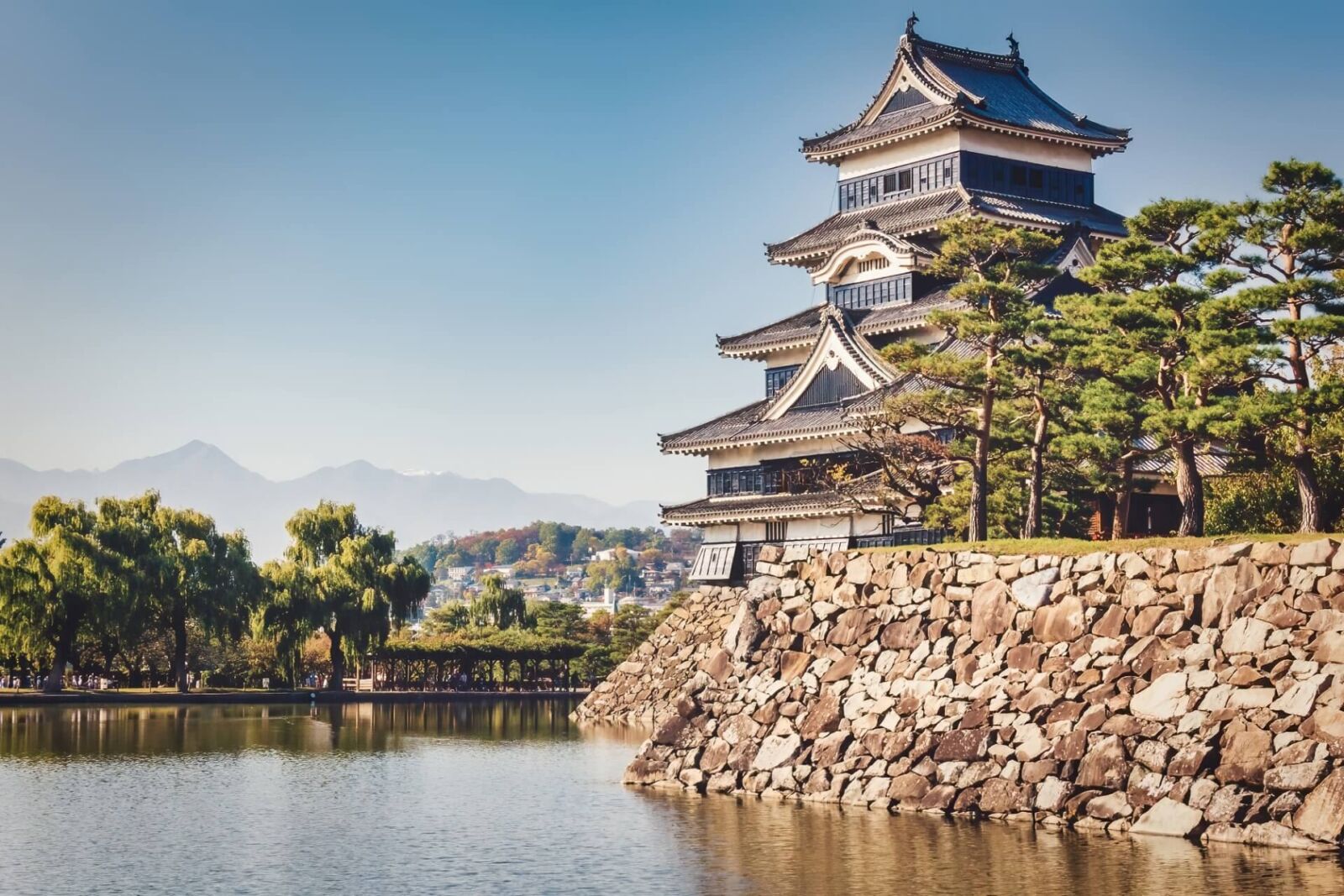
Best Selling
1-Day Tour from Nagano and Matsumoto: Kamikochi & Matsumoto Castle
- Spots:
- Pick-up:
- Drop-off:
Matsumoto: Most famous for its historical castle - one of the best in Japan - Matsumoto is a small city of around 200,000 people which sits at the bottom of the Northern Alps. Besides the impressive castle, Matsumoto also boasts beautiful avenues, a thriving music and nightlife culture, and a selection of world class museums and eateries. It even has multiple craft beer breweries, if you prefer to wind down from a day's hiking with a glass of golden ale.
Accessible directly from Tokyo in only 2.5 hours on the JR Azusa Express Train, it is a great city to use as your base in the Northern Alps. Kamikochi is accessible by direct Alpico operated buses or Kamikochi Line Train + Alpico Bus, depending on the time of day. Either way, you can reach Kamikochi in around 1.5 hours, perfect for a day trip. Alternatively, our 1-Day tour of Kamikochi and Matsumoto Castle will bring you to the best sites in Matsumoto as well as to Kamikochi all in one great day.
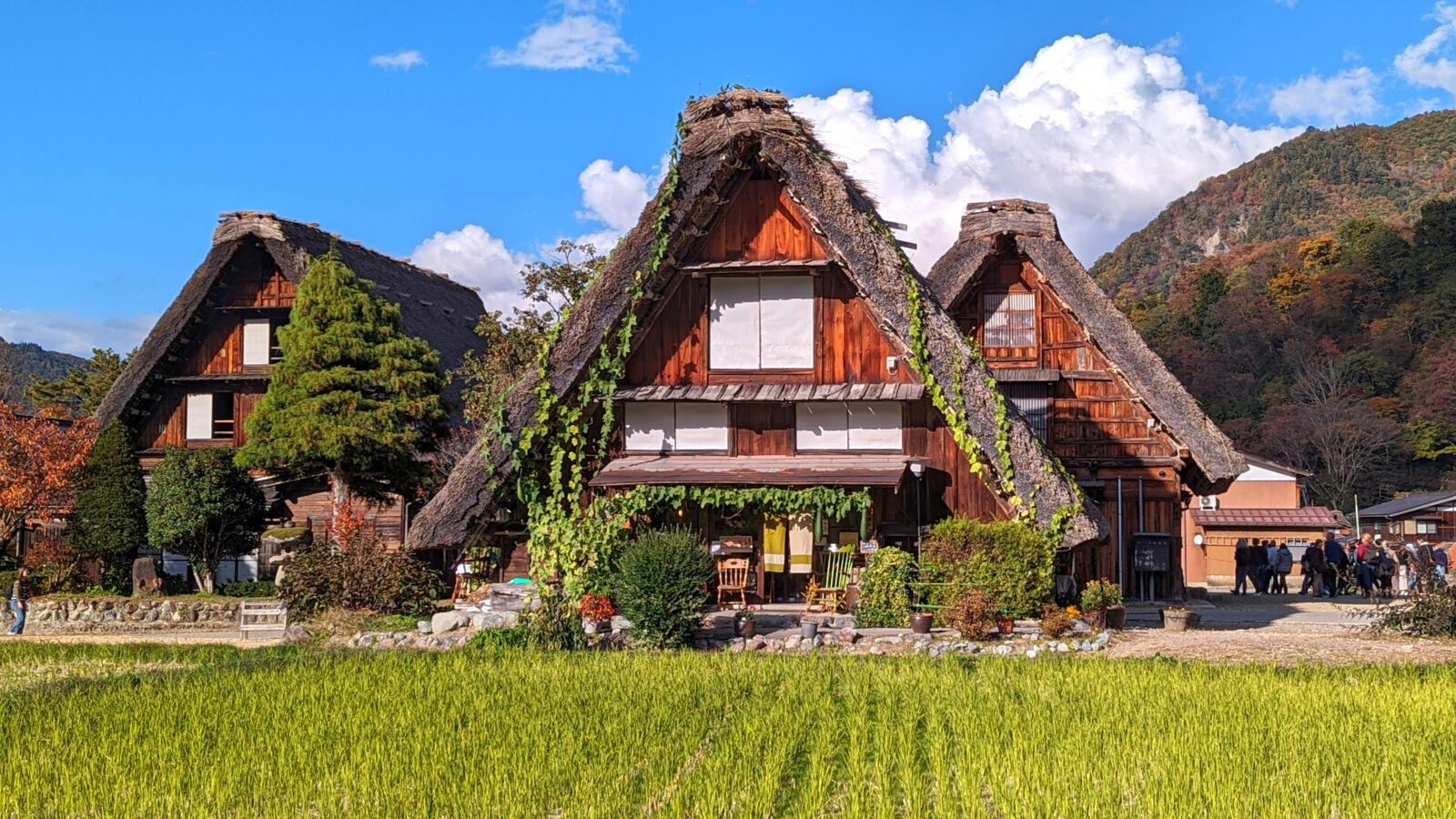
(Seasonal) 1-Day Tour from Takayama: Alpine Splendor - Shinhotaka Ropeway and Kamikochi
- Spots:
- Pick-up:
- Drop-off:
Takayama and Shirakwa-go: Located on the other side of the Alps from Matsumoto, Takayama is a smaller city which has preserved many of its traditional buildings, giving it a traditional appearance akin to Kyoto. Located around 1 hour drive from Takayama is the famous UNESCO World Heritage village of Shirakawa-go. In the village are numerous thatched roof homes with a distinctive steep slant on the roof, designed to protect the dwellings from the heavy snow which hits this region in winter.
Takayama can be accessed from Kamikochi by buses which run frequently from the Kamikochi Bus Terminal. The journey takes around 1.5 hours, so for travelers who are staying in Takayama, Kamikochi is an easily doable day trip. For those staying in Kamikochi, by using the early morning bus services to Takayama it is possible to see the city before catching the bus to Shirakawa-go. As Shirakawa-go has direct buses to Kanazawa, this would be a great way to make a day of travel an attraction in itself if Kanazawa is your ultimate destination. For those staying in Takayama, our 1-Day tour to Kamikochi would also be a great and simple way to travel and learn about the region.
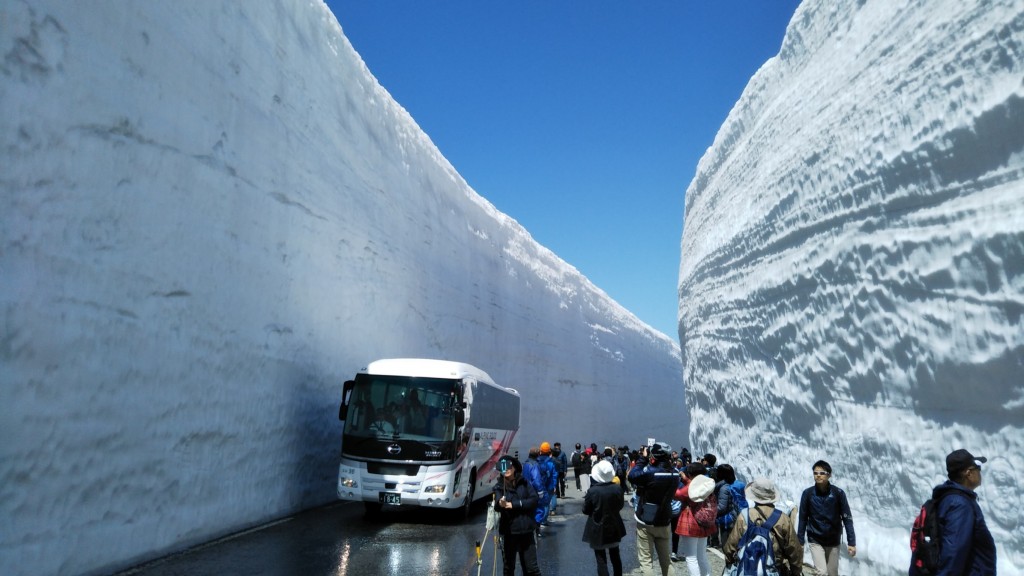
Popular
[Spring Only] 1-Day Tour from Nagano: Snow Walls of Tateyama-Kurobe Alpine Route
- Spots:
- Pick-up:
- Drop-off:
Tateyama-Kurobe Alpine Route: Famous for its towering walls of snow which accumulate over the course of the winter, the Tateyama-Kurobe Alpine Route is an epic testament to mans ability to overcome nature and includes multiple different forms of transportation bringing visitors to heights of over 3,000 meters. Located farther north than Kamikochi, it would be perhaps most easily accessible from the Nagano side by first heading to Matsumoto and from there heading north to Omachi. Alternatively, for those staying in Nagano City we offer a tour of the area that streamlines the daunting process of reaching the top of the mountain.
15 THINGS TO DO IN KAMIKOCHI
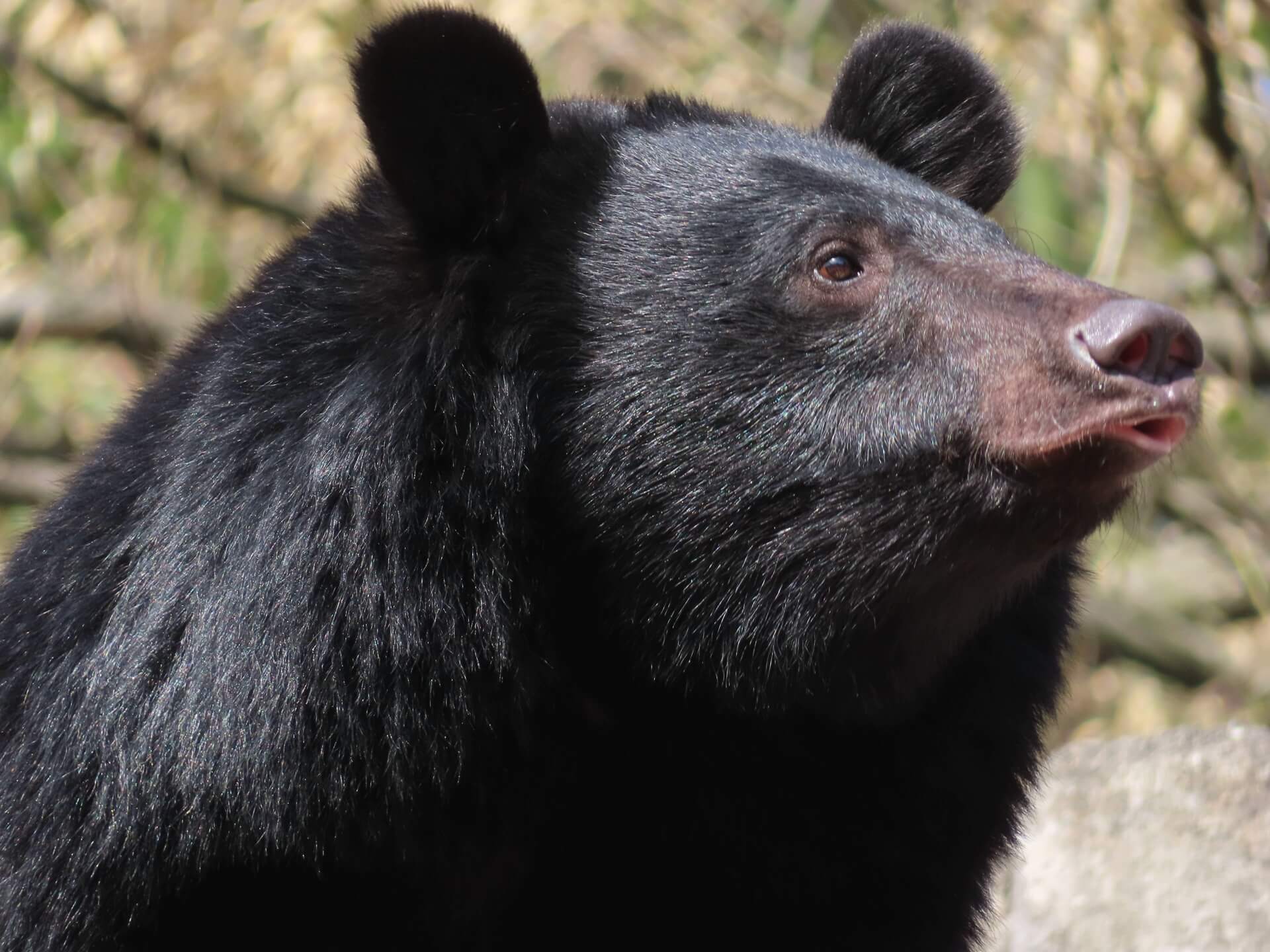
Of course, Kamikochi has more to offer than even what we have written on this page! As part of the expansive and wild Northern Japanese Alps, it really is a paradise for nature lovers and everyone who enjoys fresh air and stunning scenery. With enough planning, avid hikers could even spend more than a week in the area and not run out of options for things to do. For more about what to do and where to stay, see our page '15 Things to Do in Kamikochi, When to Visit, & Where to Stay'.
TOURS AND CHARTERS AROUND KAMIKOCHI
Breathe in fresh mountain air and stretch your legs in Kamikochi!
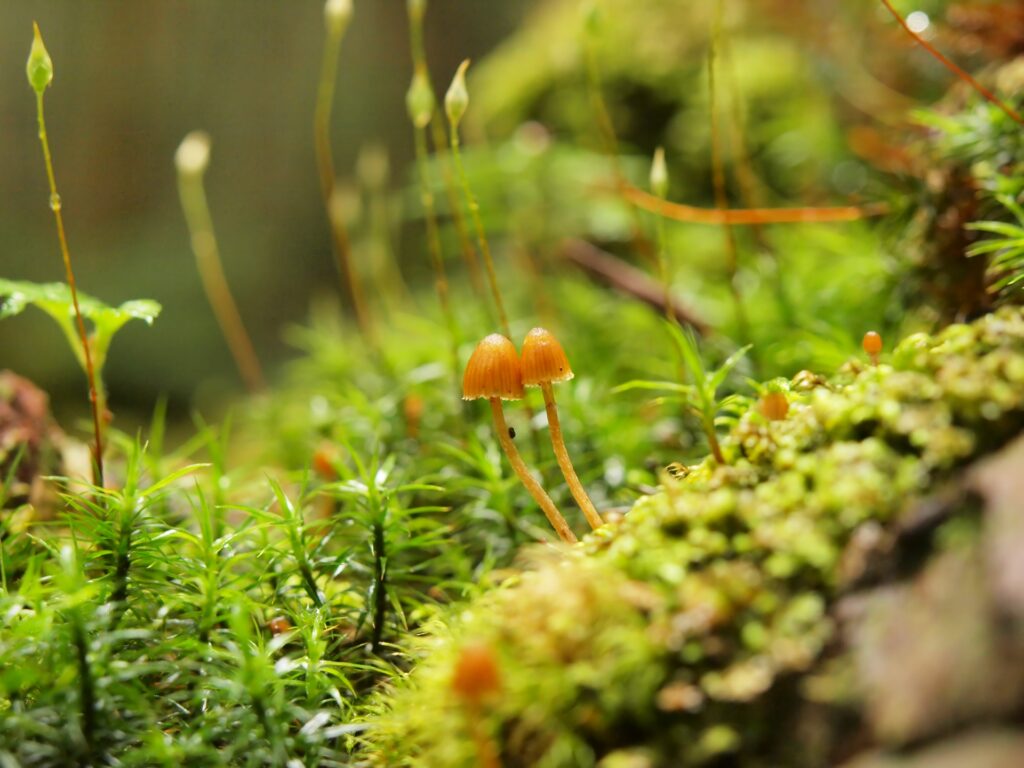
Based in Central Japan and operating April through November, we offer a highly entertaining group-tour of Matsumoto and Kamikochi that is sure to please. All tours are led by locally-based guides and combine a visit to several places-of-interest in Matsumoto with a hike in the breathtaking Kamikochi valley. Our tours are fun, interactive and family-friendly. For more information, or to book a tour, click on the banner or button below.
Best Selling
1-Day Tour from Nagano and Matsumoto: Kamikochi & Matsumoto Castle
- Spots:
- Pick-up:
- Drop-off:
We are proud to offer a tour of Kamikochi originating from Nagoya. This tour not only provides you with a guided tour of Kamikochi, but also stops at a flower park and farm located high in the Hida Highlands for a relaxing full-day excursion surrounded by the seasonal beauty of Japan. Nagoya is one of the main stops on the Tokaido Shinkansen Line, making this tour a great choice for travelers coming from Tokyo, Osaka, or Kyoto.
1-Day Tour from Nagoya: Kamikochi – Enchanting Landscapes & Seasonal Beauty
- Spots:
- Pick-up:
- Drop-off:
For travelers staying in the Hida region, we also offer a tour of Kamikochi with pickup from Takayama. Including a visit to an open air museum of preserved historical buildings showcasing the architectural legacy of Takayama, this tour is the perfect way to get to know the area and spend some time breathing in fresh air.
1-Day Tour from Takayama: Cultural Heritage and Kamikochi's Alpine Beauty
- Spots:
- Pick-up:
- Drop-off:
Of course, we also offer private tours and transport in and around the Matsumoto/Kamikochi area, and other regional destinations. Our drivers and vehicles are fully certified, allowing us to transport you to and from your preferred destinations in combination with any activity that suits your schedule. All vehicles are well-maintained and in good condition, allowing you to relax and enjoy your ride to wherever you are going.
We can arrange both private tours with an English-speaking guide or a private charter, including a private vehicle and driver but without a guide. We’d love to be part of your adventure in Central Japan and help you discover even more!
[START FROM NAGANO/MATSUMOTO] Private Kamikochi Tour
- Spots:
- Pick-up:
- Drop-off:
Got a question about visiting Matsumoto or Kamikochi? Click the ‘INQUIRY’ button below and let’s get planning together!














